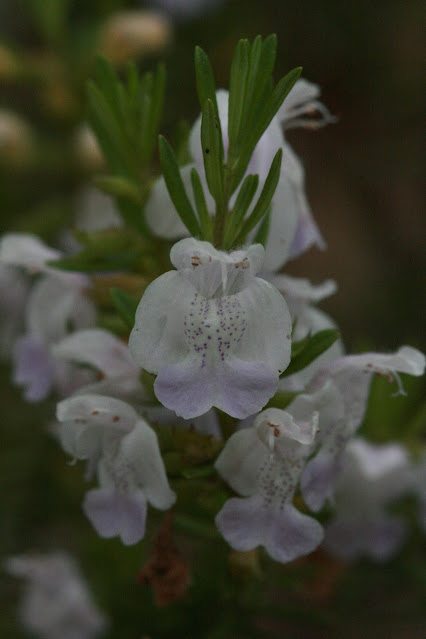Saving the Planet
 |
| Apalachicola rosemary - Conradina glabra |
I started my life in native plants with a mission to create living landscapes. As a wildlife biologist recently hired by the University of Florida to initiate a statewide program devoted to urban wildlife, it became obvious early on that I would have to learn Florida native plants and come to understand how to use them in a landscape to provide habitat for birds, pollinators and other wildlife. After all, plants comprise a significant portion of what becomes habitat.
All of this, of course, was before there were things like the internet and social media. My knowledge, for what it is, had to be derived mostly by observation and I spent a great many hours hiking/walking natural areas. I also began the planting of natives in my landscape. My ex-wife used to chastise me for going outside regularly to "stare at my garden" - and I did of course. Hours of 'staring" has taught me more about plants and the life that is drawn to and by them than anything else. Over the years, I've probably killed more native plants than anyone else in Florida, but those too were lessons learned.
All this aside, I've also been waylaid by the idea that my landscape could be a conservation haven for endangered plants - a sort of Noah's Ark that might serve as a bastion for species that might be eradicated in the wild. I've since altered my thinking, but I see it nearly every day on social media; well-meaning folks that are fascinated by native plants because they are rare and need "saving". All of us who care about conservation are naturally drawn to the plight of rare and disappearing plants. It is good that we are. Problems arise from this thinking when our landscape choices become muddled by it; when we select plants because of their conservation status and not because of the ecological role they will play.
I have a number of listed plants in my landscape such as the endangered Apalachicola rosemary above. I harbor no illusions. however, that my planting of it has any real conservation value. What does is habitat protection in the area where it grows and the efforts of the Center for Plant Conservation to preserve its gene pool for future reintroductions. These are the efforts that might truly save this species and others like it - not a plant in my landscape. As a group, we need to understand that and we need to put our time and money in support of these efforts.
Our conservation efforts are not effective if we are focused on planting endangered plants to "save them", but when our efforts are in creating landscapes that can sustain life. We can do this using native plants that are common as well as plants that are not. It comes from planned diversity and not from serendipity. Choose plants based on the ecological role that they will play, increase your diversity by planting species that are not in your immediate neighbors' yards and fill in areas with plants that will play a different, but needed, role from the ones already present. What we do can be significant, but it might take the kind of mental shifts that I've undergone over the years. Saving the planet does not come from saving endangered species in our home landscapes. It comes from creating real habitat in areas where none now exists.



Comments
Post a Comment